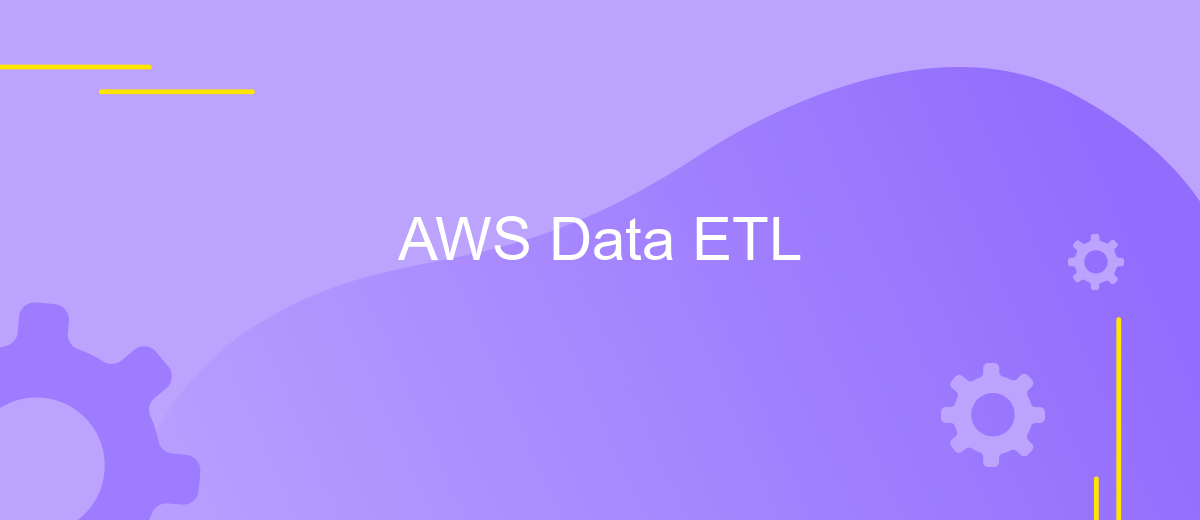AWS Data ETL
The process of Extract, Transform, Load (ETL) is crucial for managing and analyzing large datasets. Amazon Web Services (AWS) provides a robust suite of tools to streamline ETL workflows, making data integration and transformation more efficient. This article explores the key AWS services, such as AWS Glue and Amazon Redshift, that can significantly enhance your ETL processes.
Introduction
In today's data-driven world, efficient data extraction, transformation, and loading (ETL) processes are crucial for businesses to make informed decisions. Amazon Web Services (AWS) offers a comprehensive suite of tools and services designed to streamline ETL workflows, ensuring that data is accessible, reliable, and ready for analysis.
- AWS Glue: A fully managed ETL service that automates the process of discovering, cataloging, and transforming data.
- Amazon Redshift: A fast, scalable data warehouse that makes it simple to analyze large datasets.
- AWS Data Pipeline: A web service that helps you process and move data between different AWS compute and storage services.
Additionally, integrating various data sources can be simplified with tools like ApiX-Drive, which allows seamless data synchronization between multiple platforms. By leveraging AWS's robust ETL services and complementary tools like ApiX-Drive, businesses can ensure their data is always up-to-date and available for critical analysis, ultimately driving better decision-making and operational efficiency.
Data Extraction Options

When it comes to data extraction in AWS, there are several options available to suit different needs. AWS Glue is a fully managed ETL service that makes it easy to prepare and load your data for analytics. It supports a wide range of data sources, including Amazon S3, RDS, and DynamoDB. Additionally, AWS Data Pipeline allows for the orchestration of data movement and transformation, providing flexibility in scheduling and managing complex data workflows.
For those looking to integrate various third-party applications and services, ApiX-Drive offers a powerful solution. This service simplifies the process of connecting different data sources and automating data extraction tasks. With ApiX-Drive, you can easily set up integrations without the need for extensive coding, enabling seamless data flow between your applications and AWS. This can significantly reduce the time and effort required to manage your ETL processes, ensuring your data is always up-to-date and readily available for analysis.
Data Transformation Techniques

Data transformation is a critical step in the ETL process, where raw data is converted into a format suitable for analysis. Effective data transformation techniques ensure that data is clean, consistent, and ready for further processing. Here are some common techniques used in data transformation:
- Data Cleaning: This involves removing duplicate records, correcting errors, and handling missing data to ensure data quality.
- Data Aggregation: Combining data from multiple sources or summarizing data to provide a comprehensive view.
- Data Normalization: Adjusting data to a standard format, making it easier to analyze and compare.
- Data Enrichment: Enhancing data by adding additional information from external sources.
- Data Filtering: Selecting relevant data based on specific criteria to focus on important information.
Using tools like ApiX-Drive can significantly simplify the data transformation process by automating integrations and streamlining workflows. ApiX-Drive allows seamless connectivity between various data sources and targets, ensuring that transformed data is accurately and efficiently transferred across systems.
Data Loading Strategies

Data loading is a critical step in the ETL process, ensuring that transformed data is accurately and efficiently loaded into the target system. Choosing the right strategy for loading data can significantly impact performance and reliability. In AWS, a variety of data loading strategies can be employed to meet different requirements.
Batch loading is a common strategy, where data is collected over a period and loaded in bulk. This approach is efficient for handling large volumes of data but may introduce latency. Alternatively, streaming data loading allows for real-time data ingestion, suitable for applications requiring up-to-the-minute information.
- Batch Loading: Ideal for large datasets, scheduled intervals.
- Streaming Loading: Real-time data ingestion, low latency.
- Incremental Loading: Only new or changed data is loaded, reducing load times.
- Micro-batching: Combines batch and streaming, small batches in near real-time.
Tools like ApiX-Drive can simplify the integration and automation of data loading processes, providing seamless connectivity between various data sources and AWS services. By leveraging these strategies and tools, organizations can optimize their data workflows for better performance and reliability.
Data Integration Best Practices
Effective data integration is crucial for seamless ETL processes in AWS environments. To ensure optimal performance, it's essential to establish a robust data validation framework. This involves setting up automated checks to verify data accuracy and consistency at each stage of the ETL pipeline. Additionally, leveraging AWS Glue for its built-in data catalog and transformation capabilities can significantly streamline the integration process. Implementing proper error handling and logging mechanisms will also help in quickly identifying and resolving issues, thus maintaining data integrity.
Another best practice is to utilize integration services like ApiX-Drive, which can simplify connecting various data sources and destinations. ApiX-Drive offers a user-friendly interface and supports a wide range of applications, making it easier to automate data workflows without extensive coding. Regularly monitoring and optimizing data pipelines is also vital to ensure they are running efficiently. This includes reviewing performance metrics and making necessary adjustments to handle increased data volumes or changes in data structure. By adhering to these practices, organizations can achieve reliable and scalable data integration in their AWS ETL processes.
FAQ
What is AWS Data ETL?
How can I automate ETL processes in AWS?
What are the main components of an ETL pipeline in AWS?
How do I ensure data quality during the ETL process?
Can I integrate third-party applications with my AWS ETL pipeline?
Routine tasks take a lot of time from employees? Do they burn out, do not have enough working day for the main duties and important things? Do you understand that the only way out of this situation in modern realities is automation? Try Apix-Drive for free and make sure that the online connector in 5 minutes of setting up integration will remove a significant part of the routine from your life and free up time for you and your employees.

